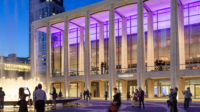Why isn't sustainability a hot issue on the campaign trail?
 |
Illustration by Brian Stauffer |
Those fast-payback, high-efficiency lights you just specified? Job-killing. The daylighted, naturally ventilated workplace you've created that delights your client and decreases sick days? A drag on the economy. When it comes to sustainability, the political debate of 2012 relies on misinformation—if those issues are addressed at all. In many places the term "global warming" can't be uttered in polite company.
The building industry has recognized the urgency of embedding sustainability deeply in product development, design, standards setting, and construction. A broad range of public and private clients recognize the urgency of cutting greenhouse-gas emissions, improving water quality, and so on.
So what's with the delusional anti-green politics? To some extent, well-financed voices with a big stake in America's wasteful status quo drive the idea that sustainable practices are "job-killing." Poll-driven politicians have concluded that clean energy is frivolous in the face of struggles to find a job or unload an underwater mortgage.
Yet architects and the building industry have unique expertise to show that America can affordably live within the world's ecological budget while creating a more robust economy and more livable communities. Too few people know that buildings and transportation, responsible for more than 70 percent of greenhouse-gas emissions, are where the affordable opportunities lie. Net-zero buildings, unknown a few years ago, pop up everywhere. With programs like LEED for Neighborhood Development, developers diversify transportation choices by easing access for walkers, bikers, and mass-transit users.
Unfortunately, affordable conservation is rarely discussed in the national campaign. President Obama and his allies took a mainstream path by promoting renewables like wind and solar, but the half-billion-dollar federal investment in the failed Solyndra solar producer has hurt that talking point. It has allowed Republican candidate Mitt Romney to correctly point out that such technologies are expensive and won't replace much conventional energy in the short term.
When politicians debate solar versus drilling, it's up to green designers and builders to remind them that efficiency is doing the hard work. Solar is affordable in most supergreen buildings only after efficiency tactics have reduced conventional usage by two-thirds or more. Yet conservation continues to be treated condescendingly by politicians across the spectrum. On the federal level, green-energy incentives and transit support are decreasing, while government subsidies for highway building keep rising.
An alleged new era of abundant energy has become an excuse for candidates to ignore larger energy issues, including global warming. The fracking boom means that natural gas now sells below cost, so today's low prices will not last. The U.S. is pumping oil like crazy, but gasoline at the pump remains close to record highs. That's because the world's thirst for oil is growing faster than new supplies.
The green-building industry needs to speak up about the diversity of jobs created by green tactics, and the global-warming effects already visible that they can ameliorate. We need to show how community design can help people leave their cars at home. We need to understand the environmental consequences of fracking and the folly of clean coal, so we can present efficiency as a lower-cost, less-destructive alternative. At this crossroads, everyone in the green-building community has more at stake—and more to contribute—than ever in history.
James S. Russell, formerly an editor at Architectural Record, is the architecture critic for Bloomberg News.



